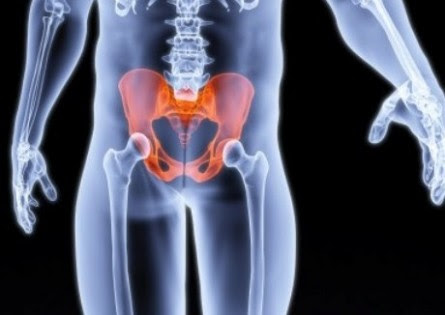skip to main |
skip to sidebar
EAST Pelvic Fracture Guidelines

Eastern Association for the Surgery of Trauma Practice Management Guidelines for Hemorrhage in Pelvic Fracture—Update and Systematic Review
J Trauma. 2011;71: 1850–1868
Six specific questions are addressed regarding the management of pelvic fracture hemorrhage:
Which Patients With Hemodynamically Unstable Pelvic Fractures Warrant Early External Mechanical Stabilization?
- The use of a pelvic orthotic device (POD) does not seem to limit blood loss in patients with pelvic hemorrhage. Level III recommendation
- The use of a POD effectively reduces fracture displacement and decreases pelvic volume. Level III recommendation
Which Patients Require Emergent Angiography?
- Patients with pelvic fractures and hemodynamic instability or signs of ongoing bleeding after nonpelvic sources of blood loss have been ruled out should be considered for pelvic angiography/embolization. Level I recommendation
- Patients with evidence of arterial intravenous contrast extravasation in the pelvis by CT may require pelvic angiography and embolization regardless of hemodynamic status. Level I recommendation
- Patients with pelvic fractures who have undergone pelvic angiography with or without embolization, who have signs of ongoing bleeding after nonpelvic sources of blood loss have been ruled out, should be considered for repeat pelvic angiography and possible embolization. Level II recommendation
- Patients older than 60 years with major pelvic fracture (open book, butterfly segment, or vertical shear) should be considered for pelvic angiography without regard for hemodynamic status. Level II recommendation
- Although fracture pattern or type does not predict arterial injury or need for angiography, anterior fractures are more highly associated with anterior vascular injuries, whereas posterior fractures are more highly associated with posterior vascular injuries. Level III recommendation
- Pelvic angiography with bilateral embolization seems to be safe with few major complications. Gluteal muscle ischemia/necrosis has been reported in patients with hemodynamic instability and prolonged immobilization or primary trauma to the gluteal region as the possible cause, rather than a direct complication of angioembolization. Level III recommendation
- Sexual function in males does not seem to be impaired after bilateral internal iliac arterial embolization. Level III recommendation
What Is the Best Test to Exclude Intra-Abdominal Bleeding?
- Focused Assessment with Sonography for Trauma (FAST) is not sensitive enough to exclude intraperitoneal bleeding in the presence of pelvic fracture. Level I recommendation
- FAST has adequate specificity in patients with unstable vital signs and pelvis fracture to recommend laparotomy to control hemorrhage. Level I recommendation
- Diagnostic peritoneal tap (DP)/Diagnostic peritoneal lavage (DPL) is the best test to exclude intra-abdominal bleeding in the hemodynamically unstable patient. Level II recommendation
- In the hemodynamically stable patient with a pelvic fracture, CT of the abdomen and pelvis with intravenous contrast is recommended to evaluate for intra-abdominal bleeding regardless of FAST results. Level II recommendation
Are There Radiologic Findings Which Predict Hemorrhage?
- Fracture pattern on pelvic X-ray does not single-handedly predict mortality, hemorrhage, or the need for angiography. Level II recommendation
- Presence/location of hematoma does not predict or exclude the need for angiography and possible embolization. Level II recommendation
- CT of the pelvis is an excellent screening tool to exclude pelvic hemorrhage. Level II recommendation
- Absence of contrast extravasation on CT does not always exclude active hemorrhage. Level II recommendation
- Pelvic hematoma 500 cc in size has an increased incidence of arterial injury and need for angiography. Level II recommendation
- Isolated acetabular fractures are as likely to require angiography as pelvic rim fractures. Level III recommendation
- If a retrograde urethrocystogram is required, it should be performed after CT with intravenous contrast. Level III recommendation
What Is the Role of Noninvasive Temporary External Fixation Devices?
- TPBs effectively reduce unstable pelvic fractures as well as definitive stabilization and decrease pelvic volume. Level III recommendation
- TPBs may limit pelvic hemorrhage but do not seem to affect mortality. Level III recommendation
- TPBs work as well or better than emergent EPF in controlling hemorrhage. Level III recommendation
Which Patients Warrant Retroperitoneal (Preperitoneal) Packing?
- Retroperitoneal pelvic packing is effective in controlling hemorrhage when used as a salvage technique after angiographic embolization. Level III recommendation
- Retroperitoneal pelvic packing is effective in controlling hemorrhage when used as part of a multidisciplinary clinical pathway including a POD/C-clamp. Level III recommendation









沒有留言:
張貼留言